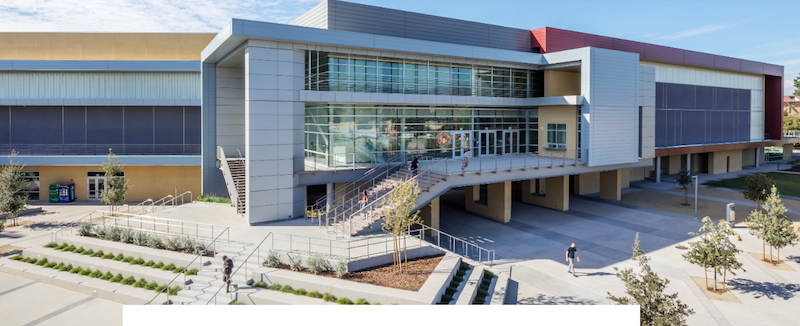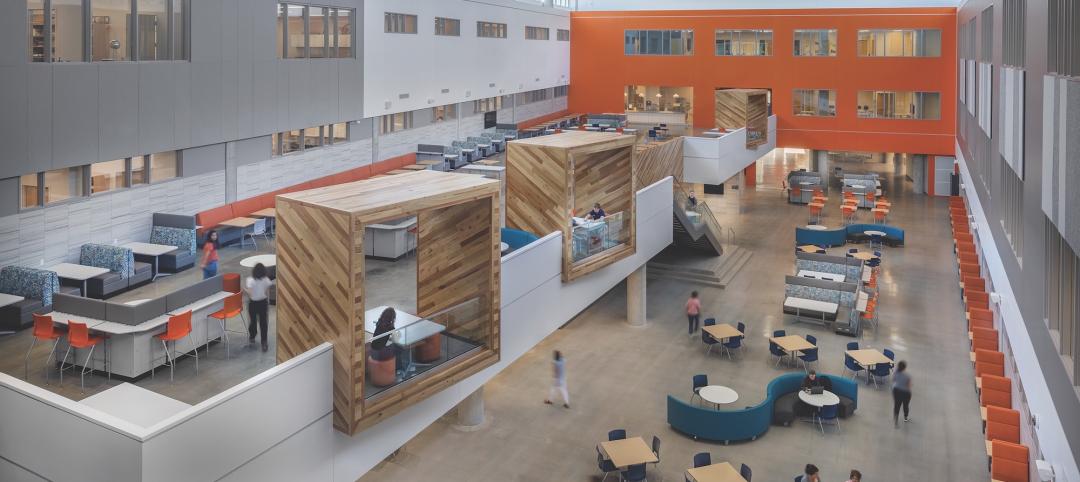Food is a basic human right and a source of comfort to many. Unfortunately, many students don’t have access to this vital resource. More than 13 million children in the United States experience food insecurity, and this has a significant impact on their academic success.
However, architects can help mitigate the effects of food insecurity in public schools and colleges around the country. Using school architecture design to address food insecurity on campus, architects can better support all students and help them achieve their academic goals.
How Food Insecurity Impacts Students
Before school architects and designers can address food insecurity on campus, they must understand how this problem affects students. Food insecurity is defined as not having access to nutritious food due to a lack of resources. Some of the negative health effects of food insecurity are:
- Obesity and high blood pressure from eating cheap processed products
- Tooth decay from eating sugary foods
- Increased risk of developing certain cancers
- Diabetes or hypoglycemia
- Osteoporosis due to a lack of calcium
- Weakened immune system
- Mental health issues such as depression, anxiety, and eating disorders
These health risks are especially harmful to young students. About one in six children in the United States experience food insecurity and miss key developmental milestones.
School administrators can combat these problems. In fact, some students rely entirely on their schools to provide them with food. Elementary school teacher Kelley Ryan explains, “When families lack the financial resources to pack food, breakfast and school lunch may be their kids’ only meals of the day.”
It’s clear that in order to address this widespread problem, school administrators have to create resources and spaces where students can get healthy meals.
School Architecture Design to Reduce Food Insecurity on Campus
Public schools and colleges usually offer free or reduced-cost meal programs to students who can’t afford to bring their own meals from home or buy food from the cafeteria. However, in order for these programs to be effective, schools also need to provide a space where students can pick up their food.
Designing Equitable Dining Halls
The main benefit of making the dining hall more accommodating is that it helps students feel less isolated from their peers. The school district or college may provide them with meal tickets or prepaid cards that they can use to buy food from the front counter, just like their fellow students.
Here are a few design elements that make dining halls even more welcoming to students facing food insecurity:
- Offer plenty of healthy food options. Food insecurity impacts students’ nutrition. By providing a variety of different healthy foods (as opposed to just one or two options each day), you’ll give these students the chance to make up some of their nutritional deficiencies.
- Use a Marché design. It’s difficult to offer students food variety when you only have one serving counter. A Marché design involves placing many smaller food stations around the room, with a large seating area at the center.
- Show the food being prepared and cooked. Some students facing food insecurity don’t know how to prepare or cook meals for themselves at home. By placing the kitchen where students can see it, they can watch how the food is made and may learn by example.
- Build community gardens. Using landscape architecture design, you can create community food gardens—even in urban areas. For example, We are working on a new project for Sacramento City Unified School District called Floyd Farms, a joint-use project between the Sacramento City Unified School District, the City of Sacramento and a local developer. Adjacent to Leataata Floyd Elementary school, a District-owned 4 acre parcel has laid vacant, with homeless camps filling the tree line against Interstate 5 along the west edge of the property. The trees have been cleared, and planning has begun for a 5,000 sq. ft. classroom, kitchen, and office space allowing a local non-profit, The Food Literacy Center to teach cooking and nutrition to hundreds of low-income District students. A community garden is planned for the south portion of the site to be used by the low-income neighbors to the south. North of the building will be a farm, operated by the Food Literacy Center. There, students will work the land, plant crops, raise chickens, and preparing fresh meals in support of the Food Literacy Center and SCUSD vision. The District is also using this project as a pilot to launch its Zero Net Energy initiative. So the building, and farm will not only have a huge impact on the students and community but also will be friendly to the environment.
Because all of these design elements are located in the communal dining hall, they support every student, not just those facing food insecurity.
Creating a Food Pantry Specifically for Students in Need
Students might be able to get free lunches in the cafeteria, but when they get home they may not having anything to eat. Having a food pantry on campus where students can shop for free or affordable food and bring it home is a great option. This is also especially useful for college students.
For example, Palomar College’s Anita and Stan Maag Food & Nutrition Center encourages students to stay in school by providing them with nutritious food that they can take home. One Palomar student says, “If the food pantry at Palomar hadn’t existed, I probably would have stopped coming to college.”
The reason why the Palomar food center was so successful is that the designers made the pantry feel welcoming. The college president wanted the room to look like a miniature Trader Joe’s—a small specialty food shop filled with organic produce and other healthy options.
There are several design techniques architects use in food pantries:
- Warm, earthy paint colors. Browns and creams make the room feel calm.
- Wood finishes. Whether they’re on the walls, ceiling, countertops, and shelves, wood finishes add to the warm, homey feeling in the room.
- Soft LED lights. These mimic the look of natural daylight and make the space appear brighter.
- Fresh produce baskets. Positioned at the center of the room, these encourage students to make healthier choices.
- A grocery store-like layout. This is complete with fully-stocked food shelves, refrigerators, and a checkout counter located near the entrance.
- Food preparation counters. These combine well with microwaves to create spaces where students can cook their food and bring it to communal dining areas to eat.
- A large welcome sign. This is a touch that encourages students to come in and browse the shelves.
- A smaller, more private entrance. Situated at the back of the pantry, this is for students to use if they feel embarrassed to be seen entering the pantry.
- Outreach kiosks. When located around campus, these kiosks normalize the use of these food services and ensure that every student knows they have this option.
Using these design elements helps students to feel excited to visit the pantry each day and bring home nutritious food for themselves or their families.
Architects Can Make a Difference in Students’ Lives
School architecture design for food insecurity on campus involves more than just renovating a dining hall or keeping a pantry stocked with fresh vegetables. You have to create a sense of dignity and comfort in these spaces. Students should never feel embarrassed to use these essential services.
Architecture firms that specialize in dining hall design can make a meaningful difference in these students’ lives. By hiring a design firm that understands the important role that food and communal dining play in education, you’ll create a better support system for all of your students.
Related Stories
Student Housing | Dec 7, 2022
Cornell University builds massive student housing complex to accommodate planned enrollment growth
In Ithaca, N.Y., Cornell University has completed its North Campus Residential Expansion (NCRE) project. Designed by ikon.5 architects, the 776,000-sf project provides 1,200 beds for first-year students and 800 beds for sophomore students. The NCRE project aimed to accommodate the university’s planned growth in student enrollment while meeting its green infrastructure standards. Cornell University plans to achieve carbon neutrality by 2035.
University Buildings | Dec 5, 2022
Florida Polytechnic University unveils its Applied Research Center, furthering its mission to provide STEM education
In Lakeland, Fla., located between Orlando and Tampa, Florida Polytechnic University unveiled its new Applied Research Center (ARC). Designed by HOK and built by Skanska, the 90,000-sf academic building houses research and teaching laboratories, student design spaces, conference rooms, and faculty offices—furthering the school’s science, technology, engineering, and mathematics (STEM) mission.
Education Facilities | Nov 30, 2022
10 ways to achieve therapeutic learning environments
Today’s school should be much more than a place to learn—it should be a nurturing setting that celebrates achievements and responds to the challenges of many different users.
K-12 Schools | Nov 30, 2022
School districts are prioritizing federal funds for air filtration, HVAC upgrades
U.S. school districts are widely planning to use funds from last year’s American Rescue Plan (ARP) to upgrade or improve air filtration and heating/cooling systems, according to a report from the Center for Green Schools at the U.S. Green Building Council. The report, “School Facilities Funding in the Pandemic,” says air filtration and HVAC upgrades are the top facility improvement choice for the 5,004 school districts included in the analysis.
University Buildings | Nov 13, 2022
University of Washington opens mass timber business school building
Founders Hall at the University of Washington Foster School of Business, the first mass timber building at Seattle campus of Univ. of Washington, was recently completed. The 84,800-sf building creates a new hub for community, entrepreneurship, and innovation, according the project’s design architect LMN Architects.
University Buildings | Nov 2, 2022
New Univ. of Calif. Riverside business school building will support hybrid learning
A design-build partnership of Moore Ruble Yudell and McCarthy Building Companies will collaborate on a new business school building at the University of California at Riverside.
K-12 Schools | Nov 1, 2022
Safety is the abiding design priority for K-12 schools
With some exceptions, architecture, engineering, and construction firms say renovations and adaptive reuse make up the bulk of their work in the K-12 schools sector.
School Construction | Oct 31, 2022
Claremont McKenna College science center will foster integrated disciplinary research
The design of the Robert Day Sciences Center at Claremont McKenna College will support “a powerful, multi-disciplinary, computational approach to the grand socio-scientific challenges and opportunities of our time—gene, brain, and climate,” says Hiram E. Chodosh, college president.
University Buildings | Oct 27, 2022
The Collaboratory Building will expand the University of Florida’s School of Design, Construction, and Planning
Design firm Brooks + Scarpa recently broke ground on a new addition to the University of Florida’s School of Design, Construction, and Planning (DCP).
Higher Education | Oct 24, 2022
Wellesley College science complex modernizes facility while preserving architectural heritage
A recently completed expansion and renovation of Wellesley College’s science complex yielded a modernized structure for 21st century STEM education while preserving important historical features.


















